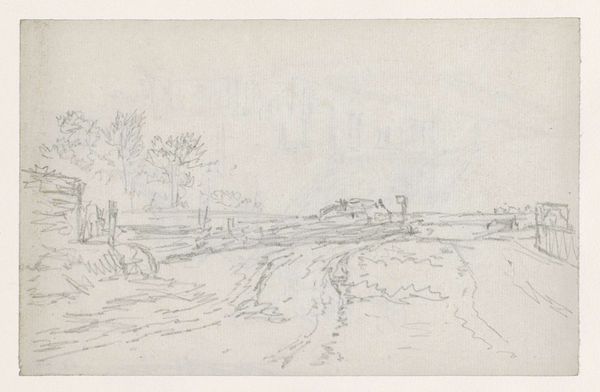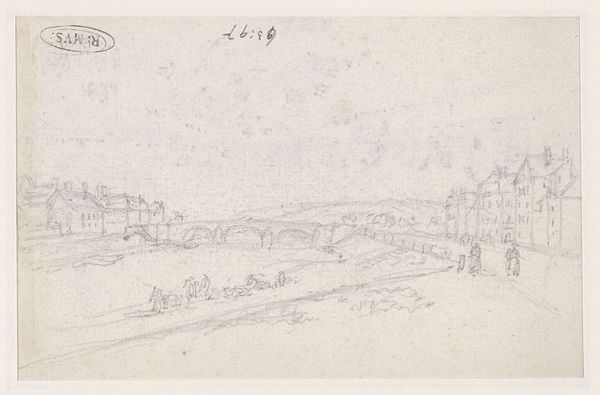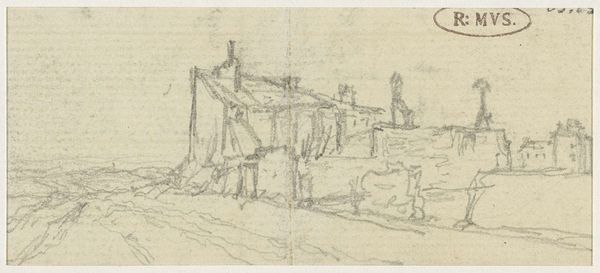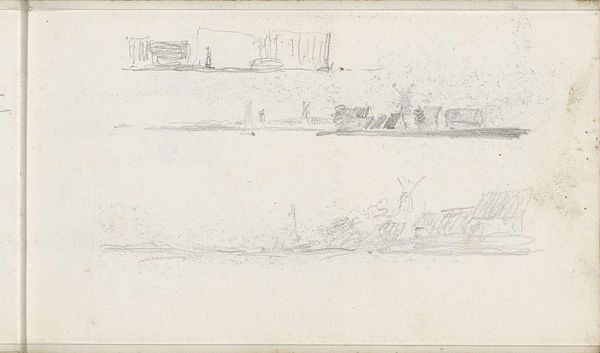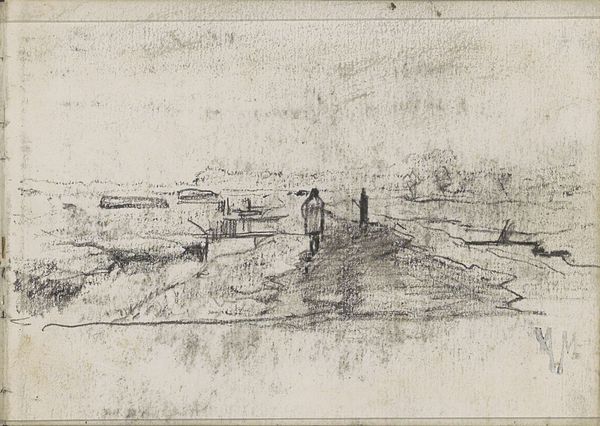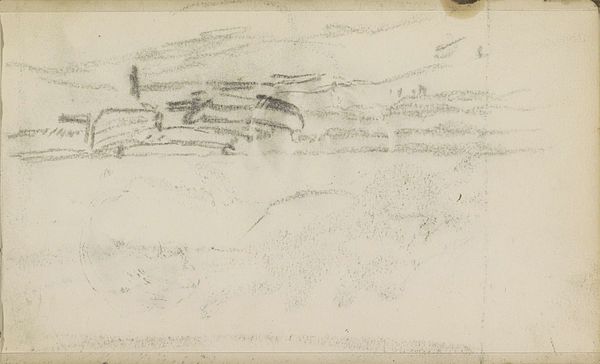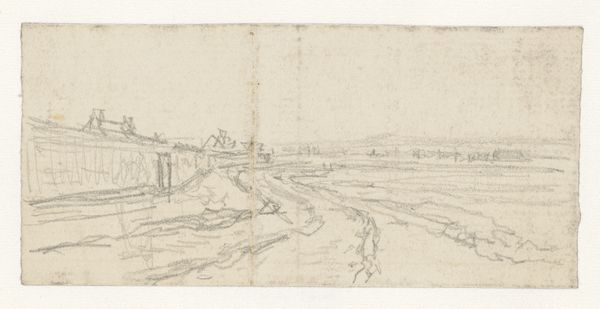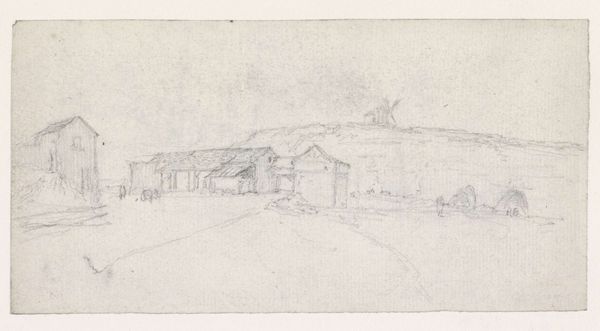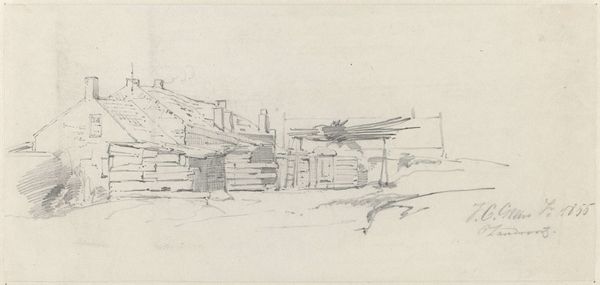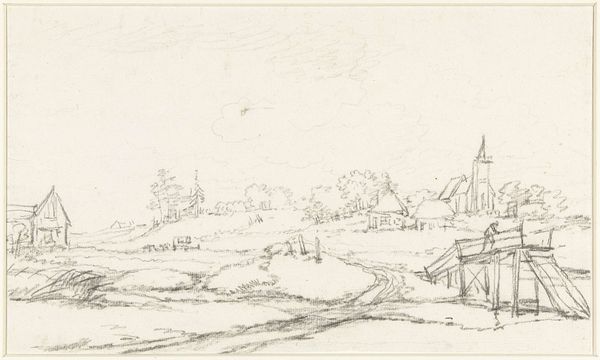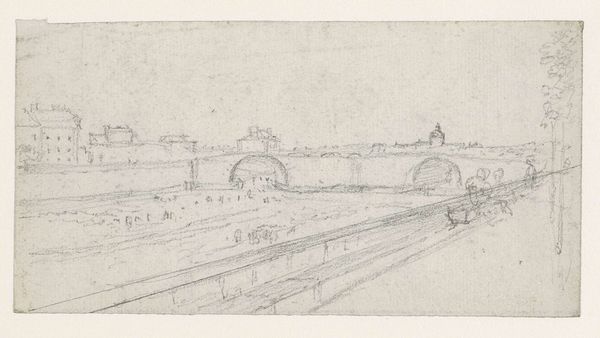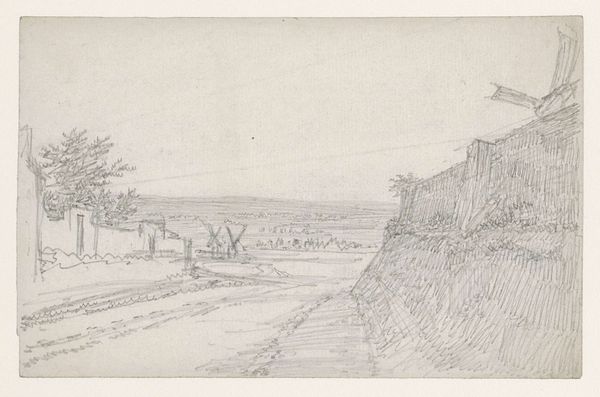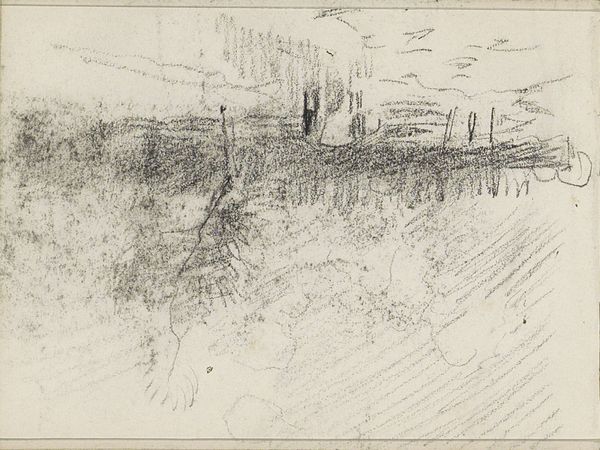
drawing, pencil
#
drawing
#
landscape
#
etching
#
romanticism
#
pencil
Dimensions: height 88 mm, width 125 mm
Copyright: Rijks Museum: Open Domain
Editor: We’re looking at “Bruggetje,” a pencil and etching drawing by Georges Michel, created sometime between 1773 and 1843. It seems very understated, almost minimalist. What strikes you about the composition? Curator: Immediately, I’m drawn to the spatial relationships Michel establishes. The bridge acts as a visual anchor, horizontally bisecting the composition. Note how the subtle gradations in the pencil work suggest depth and distance, yet the sketch remains fundamentally flat. Editor: Flat in what sense? Curator: In the sense that the drawing resists complete illusionism. The visible pencil strokes, the somewhat crude rendering of the bridge’s structure—these elements remind us that we are looking at a constructed image, not a perfect reflection of reality. What do you make of the mark-making? Editor: It’s very free, very loose. The lines seem almost to vibrate, especially in the foreground. There isn't a hard edge to be found. Curator: Precisely. The lack of precise contours, and the reliance on suggestion, encourages the viewer to participate actively in the process of seeing. It focuses on the act of representing something as much as on the something itself. It raises the question of "What is there really there versus what am I assuming?" Editor: That's fascinating, I hadn't thought about it that way. So the apparent simplicity actually masks a quite sophisticated interplay of form and technique. Curator: Precisely. An artistic choice, where less is certainly more. Editor: Thanks for shedding some light on Georges Michel's aesthetic intention. Curator: Indeed. Visual examination clarifies theoretical concerns.
Comments
No comments
Be the first to comment and join the conversation on the ultimate creative platform.
